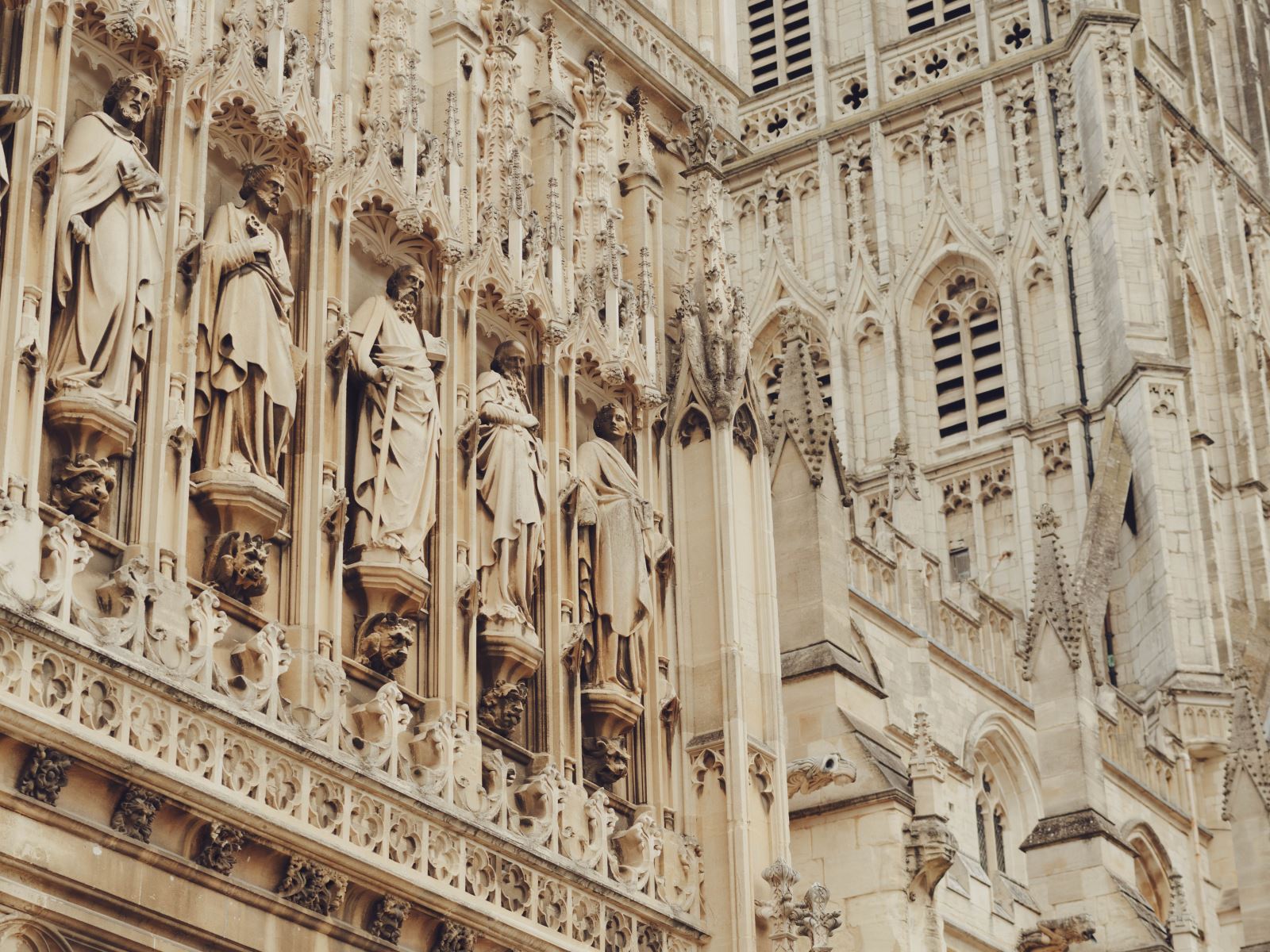Gloucester Cathedral is to hold its first ever sealed bid auction of historically significant stones. Ten stones of varying age, size and weight have been carefully selected by Master Mason, Pascal Mychalysin. Each of the stones will be accompanied by a certificate of authenticity detailing its historical journey to today and the original location of the stone during its time in the Cathedral.
This unique auction will formally launch at Friends of Gloucester Cathedral Day on Saturday 13 November, with members of the Friends having exclusive viewing of the pieces on display in the Chapter House.
On Monday 15 November the stones will be moved to the Mason’s yard in Pitt Street and made available for public viewing for one week. Each stone will have a reserve placed upon it, if the reserve is not met, the item will remain the property of Gloucester Cathedral.

Sealed bids can be handed in to the Cathedral Welcome Desk using the bidding envelopes located next to the stone displays or you can email your bid to development@gloucestercathedral.org.uk. The auction will close on Sunday 21 November. The highest bid holder will be contacted with the good news on Monday 22 November.
A catalogue of items are now available to view and download from the Cathedral’s website
Proceeds raised from the auction will go directly to supporting the upkeep of Gloucester Cathedral.
The Very Rev’d Stephen Lake, Dean of Gloucester said: “People sometimes think that cathedrals are like ships in a bottle, stuck, unable to move and yet the reality is that cathedrals are built with both living stones and the stones that after hundreds of years need replacing. Imbued with prayer and presence, this opportunity is ideal for you to have a piece of your cathedral, and support its on-going work – forever.”
Master Mason, Pascal Mychalysin said: “This is the first time the cathedral has auctioned stones of such historical significance. Some dating back hundreds of years. I’d encourage anyone to take advantage of this unique opportunity to own a part of the cathedral’s history.”
Related
Comments
Comments are disabled for this post.




 to add an item to your Itinerary basket.
to add an item to your Itinerary basket.

.png)

